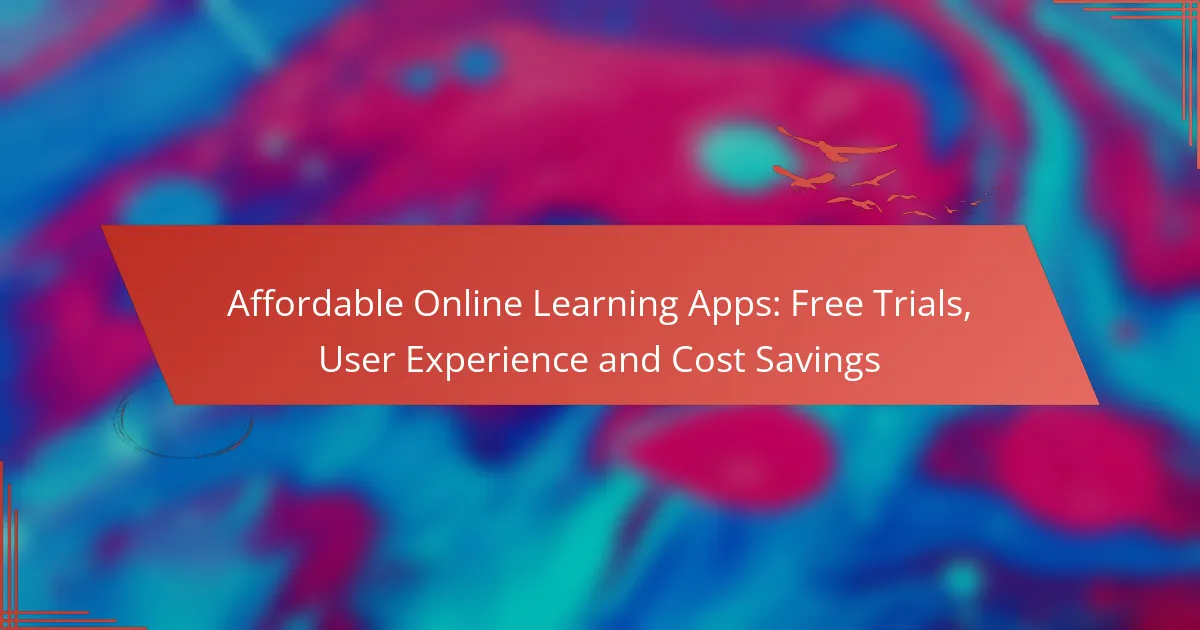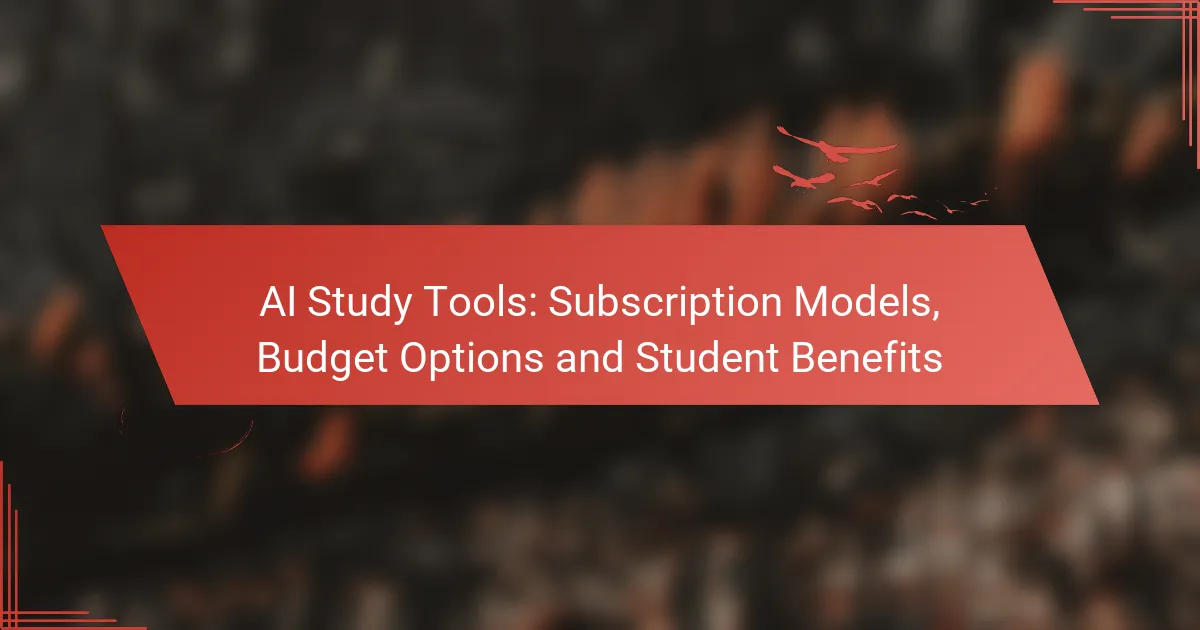AI study tools are increasingly offering flexible payment options that cater to diverse financial situations, allowing users to select plans that best suit their budgets. With choices ranging from subscription models to pay-per-use and free tiers, these platforms ensure accessibility for all. Additionally, these tools are designed to meet the professional needs of users, featuring customizable study plans and collaboration capabilities to enhance learning efficiency.

What Are the Best AI Study Tools for Flexible Payment Options?
The best AI study tools for flexible payment options allow users to choose plans that fit their budgets and needs. Many of these platforms offer subscription models, pay-per-use options, or free tiers, making them accessible for various financial situations.
Notion
Notion provides a versatile workspace that combines note-taking, task management, and database functionalities. Its pricing model includes a free version with essential features, while paid plans start at a reasonable monthly fee, offering additional capabilities for teams and advanced users.
Consider using Notion if you need a customizable platform for organizing study materials. The flexibility in payment options makes it suitable for both individual learners and educational institutions.
Quizlet
Quizlet is a popular study tool that offers flashcards, quizzes, and games to enhance learning. The basic version is free, but users can upgrade to Quizlet Plus for a monthly fee, which unlocks advanced features like offline access and ad-free studying.
When using Quizlet, take advantage of its extensive library of user-generated content. This can save time and provide diverse study materials without additional costs.
Evernote
Evernote is a powerful note-taking app that allows users to capture and organize information efficiently. It offers a free tier with limited features, while premium plans are available for a monthly or annual fee, providing additional storage and collaboration tools.
For students, Evernote’s ability to sync across devices is a significant advantage. Be mindful of the storage limits on the free version, as heavy users may need to consider upgrading.
Microsoft OneNote
Microsoft OneNote is a free note-taking application that integrates seamlessly with other Microsoft Office products. It provides a flexible workspace for organizing notes, drawings, and multimedia content without any cost, making it an excellent choice for students.
Utilize OneNote’s collaboration features for group projects. Since it is free, it allows students to share notes without worrying about subscription fees.
Google Workspace
Google Workspace offers a suite of productivity tools, including Google Docs, Sheets, and Drive, which are free for individual users. Paid plans are available for businesses and educational institutions, providing additional storage and administrative features.
For students, the free version of Google Workspace is often sufficient for collaborative projects and document sharing. Be aware of the storage limits, as exceeding these may require an upgrade to a paid plan.

How Do Subscription Models Work for AI Study Tools?
Subscription models for AI study tools provide users with flexible payment options, allowing access to resources and features based on their needs. These models typically include monthly, annual, and freemium options, each with distinct benefits and considerations for users.
Monthly subscriptions
Monthly subscriptions allow users to pay for AI study tools on a month-to-month basis, offering flexibility for those who may need short-term access. This model is ideal for students or professionals who want to test a tool before committing long-term.
However, monthly subscriptions often come at a higher overall cost compared to annual plans. Users should evaluate their usage patterns to determine if a monthly option is financially viable in the long run.
Annual subscriptions
Annual subscriptions typically offer a discounted rate compared to monthly payments, making them a cost-effective choice for long-term users. This model is suitable for individuals or organizations that plan to use the AI study tool consistently throughout the year.
While the upfront cost may be higher, annual subscriptions often include additional features or benefits, such as priority support or exclusive content. Users should consider their commitment level and budget before opting for this model.
Freemium models
Freemium models provide basic access to AI study tools at no cost, with optional premium features available for a fee. This approach allows users to explore the tool’s capabilities without financial commitment, making it appealing for those on a tight budget.
However, users should be cautious of limitations in the free version, such as restricted features or usage caps. Evaluating the value of premium upgrades is essential to ensure that the investment aligns with their educational or professional goals.

What Are the Key Features of AI Study Tools for Professionals?
AI study tools for professionals are designed to enhance learning efficiency and effectiveness through tailored features. Key aspects include customizable study plans, collaboration capabilities, and analytics for tracking progress, all aimed at meeting the unique needs of working individuals.
Customizable study plans
Customizable study plans allow professionals to tailor their learning experiences based on their specific goals, schedules, and learning styles. Users can adjust the content, pace, and focus areas to align with their professional requirements, making it easier to integrate study time into busy workdays.
For instance, a marketing professional might prioritize modules on data analytics while a software engineer could focus on coding languages. This flexibility helps maximize the relevance of the material, ensuring that the study time is both productive and applicable to real-world scenarios.
Collaboration features
Collaboration features in AI study tools enable professionals to engage with peers, mentors, or study groups, fostering a shared learning environment. These tools often include discussion forums, shared resources, and real-time feedback mechanisms, which enhance the learning experience through interaction.
For example, professionals can work together on case studies or projects, allowing for diverse perspectives and collective problem-solving. This collaborative approach not only enriches understanding but also builds valuable networking opportunities within the industry.
Analytics and progress tracking
Analytics and progress tracking features provide insights into a learner’s performance, helping professionals identify strengths and areas for improvement. These tools often include dashboards that visualize progress over time, allowing users to set benchmarks and adjust their study plans accordingly.
For instance, if a user notices a decline in performance in a specific area, they can allocate more time to that subject. Regularly reviewing progress can motivate users to stay committed and make informed decisions about their learning paths, ultimately leading to better outcomes in their professional development.

How to Choose the Right AI Study Tool for Your Needs?
Choosing the right AI study tool involves understanding your specific study habits, ensuring compatibility with your learning style, and considering feedback from other users. By evaluating these factors, you can select a tool that enhances your learning experience effectively.
Assessing your study habits
Start by identifying how you learn best. Do you prefer visual aids, interactive quizzes, or structured lessons? Understanding whether you thrive on repetition or need varied content can guide your choice of AI study tools.
Consider your schedule and study environment as well. If you study in short bursts, look for tools that offer quick, digestible content. If you have longer sessions, a tool with in-depth resources may be more suitable.
Evaluating tool compatibility
Check if the AI study tool integrates well with your existing resources, such as textbooks or online courses. Compatibility with devices and operating systems is also crucial—ensure the tool works on your preferred platforms, whether it’s a smartphone, tablet, or computer.
Additionally, assess the learning formats offered. Some tools may focus on video content, while others provide text-based resources or interactive simulations. Choose one that aligns with your preferred learning style for optimal engagement.
Considering user reviews
User reviews can provide valuable insights into the effectiveness of an AI study tool. Look for feedback that highlights both strengths and weaknesses, focusing on aspects like ease of use, content quality, and customer support.
Pay attention to reviews from users with similar needs or backgrounds. If a tool is praised for helping students in your field or level of study, it may be a good fit for you. Avoid tools with consistently negative feedback, especially regarding reliability or functionality.

What Are the Financial Planning Considerations for AI Study Tools?
Financial planning for AI study tools involves evaluating subscription costs, assessing their benefits, and understanding their long-term value. Careful budgeting and analysis can help ensure that these tools align with both professional needs and financial goals.
Budgeting for subscriptions
When budgeting for AI study tools, consider the monthly or annual subscription fees, which can vary widely based on features and access levels. Many platforms offer tiered pricing, with basic plans starting from around $10 to $30 per month, while premium options can exceed $100 monthly.
It’s essential to account for any additional costs, such as training or integration fees. Set a clear budget that reflects your financial situation and stick to it to avoid overspending.
Cost-benefit analysis
A cost-benefit analysis helps determine whether the investment in AI study tools is justified. Start by listing all costs, including subscriptions and any ancillary expenses, and compare them against the expected benefits, such as improved learning outcomes or time savings.
For instance, if a tool saves you several hours of study time each week, calculate the value of that time based on your hourly rate. This approach can clarify whether the tool’s benefits outweigh its costs.
Long-term investment value
Evaluating the long-term investment value of AI study tools involves considering their potential to enhance your skills and career prospects. Tools that provide ongoing updates and new features can offer sustained value over time.
Think about how these tools fit into your career trajectory. If they can significantly improve your efficiency or knowledge in your field, the initial costs may be well worth it. Regularly reassess their value to ensure they continue to meet your evolving needs.

How Do AI Study Tools Enhance Learning Outcomes?
AI study tools significantly improve learning outcomes by providing tailored educational experiences that adapt to individual needs. These tools utilize data-driven insights to enhance engagement and retention, making learning more effective and efficient.
Personalized learning experiences
Personalized learning experiences are at the core of AI study tools, allowing students to learn at their own pace and according to their unique preferences. These tools analyze user interactions and performance data to create customized study plans that target specific strengths and weaknesses.
For example, a student struggling with math concepts might receive additional practice problems and resources focused on those areas, while excelling in language arts could lead to advanced reading materials. This adaptability ensures that learners remain engaged and motivated, as the content is relevant to their current skill levels.
To maximize the benefits of personalized learning, students should regularly assess their progress and adjust their study plans accordingly. Utilizing feedback from AI tools can help identify areas for improvement and ensure a balanced approach to learning across subjects.



